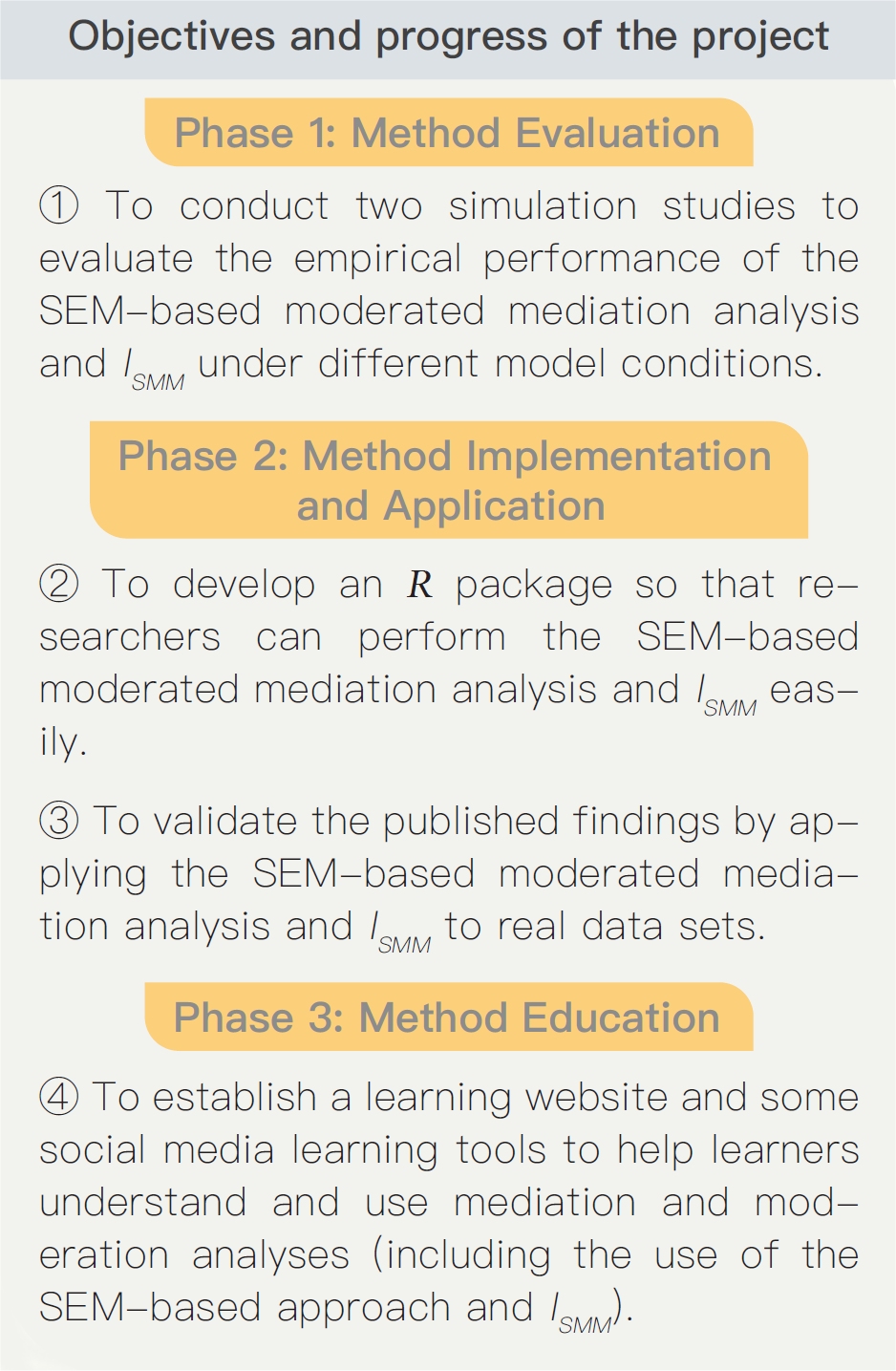Project name: Spurious Moderated Mediation Effect: A Methodological Remedy
Funding Scheme: Faculty Development Scheme, Competitive Research Funding Schemes for the Local Self-financing Degree Sector (2020/2021), Research Grants Council
Funding awarded: HK$634,280
Principal Investigator: Dr. NG Chi Kit Jacky (Assistant Professor, Department of Counselling and Psychology)
Funding period: 24 months
A spurious effect is a null effect that is incorrectly found to be significant due to statistical artifacts. Under some conditions, a statistical method (e.g. correlation and regression analyses) may indicate the presence of an effect that does not actually exist (i.e. a spurious effect). Critically, if a statistical method has been extensively used, the likelihood of finding a spurious effect can also be high.
Dr. NG Chi Kit Jacky said in the past decade, a statistical method of moderated mediation analysis has been widely and increasingly employed. According to the Google Scholar Citation Index, the key papers that outline the use of moderated mediation analysis have been cited 43,404 times. In social science research, the use of moderated mediation analysis also increased exponentially over the past 13 years. With the extensive and emergent use of moderated mediation analysis, the likelihood of there being a spurious moderated mediation effect may also increase.
According to Dr. NG, in this project, he will identify how a spurious moderated mediation effect might be found and then propose a methodological remedy to rule out the spurious effect. The project focuses on two basic moderated mediation models, namely a second stage moderated mediation model (Part I) and a dual stage moderated mediation model (Part II).
In Part I, Dr. NG and his team will illustrate that the use of a regression-based moderated mediation analysis may result in a spurious moderated mediation effect when researchers incorrectly specify a direct moderation model as a second stage moderated mediation model.
“To resolve this problem, we propose an approach based on structural equation modeling (SEM). This SEM-based moderated mediation analysis offers a new path-analytic specification for a second stage moderated mediation model and uses an omnibus measure of model fit to rule out the spurious moderated mediation effect,” Dr. NG said.
In Part II, Dr. NG and his team will identify the condition in which the index of moderated mediation (IMMM) may result in a spurious moderated mediation effect in a dual stage moderated mediation model. This condition involves the inverse collinearity between two moderators. As a remedy, they propose a novel index of spurious moderated mediation (ISMM) to detect this condition and rule out the spurious effect for a dual stage moderated mediation model.

Source: April 2021 Issue
